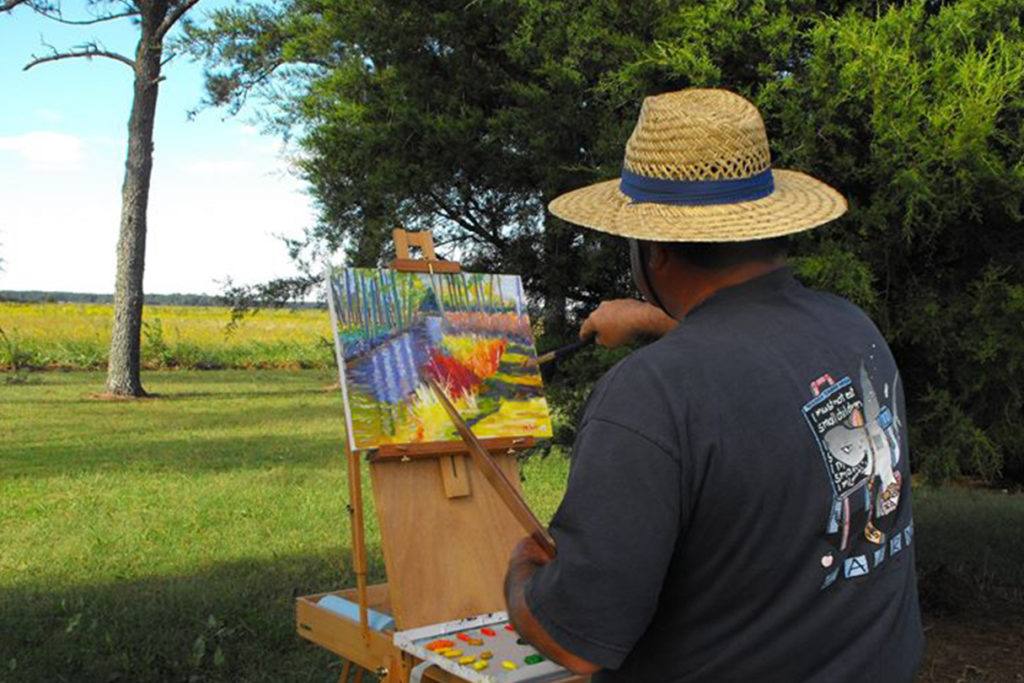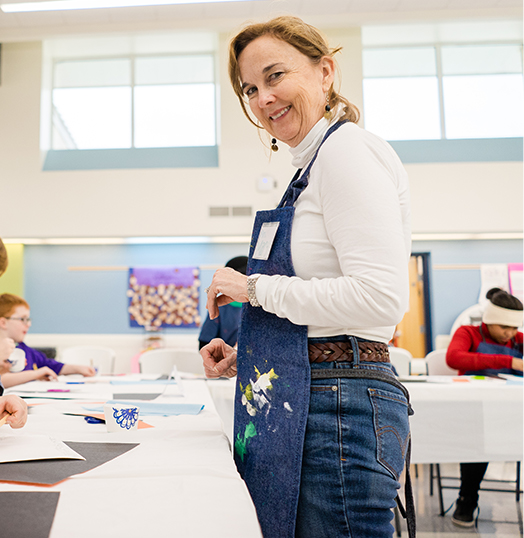AFJ Founder and art instructor, Mark Hierholzer, writes about his journey in becoming an impressionist and colorist:
For years oil painting was how I created breathing space and perspective in the midst of a busy life. Over time and with the help of many excellent artists and mentors, this precious activity began to produce things of beauty and delight I could share with others. Today, I have the opportunity to paint and teach as an artist, offering other people the opportunity to enjoy this same discovery and spaciousness. Students can begin to enjoy the world of color and the adventure of learning impressionist oil painting.
Classes are available at my studio in the West End of Richmond and at the Art for the Journey Frable Studio in Midlothian. All materials are provided unless a student chooses to bring their own. All they need do is show up! I work with beginners who want to try their hand at oil painting as well as experienced painters who want to bring more color into their work.
Studio classes are scheduled in six-week sessions and cost $240, which includes all materials. A schedule of the classes is available upon request (email mark@artforthejourney.org). We need a minimum of six students to begin a class at the Frable Studio. You can begin any time at my studio. No minimum is required.
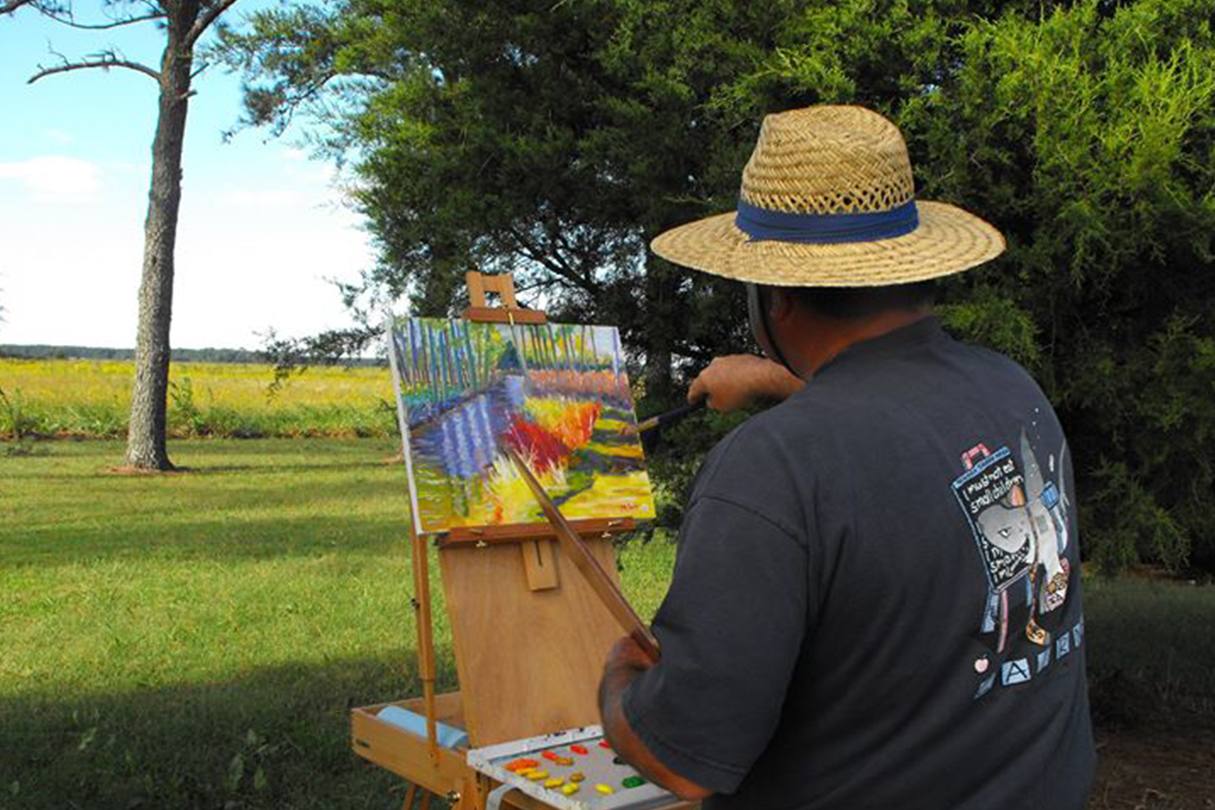
What is Impressionism?
Perhaps the simplest definition of impressionism is "the study of the effect of light on color." Claude Monet, the foremost of French Impressionists, spent most of his artistic career studying color and learning how to express its truth in oil painting. At one point he is quoted as saying, "Color is my daylong obsession, joy, and torment."
Claude Monet, Pierre-Auguste Renior and the French Impressionists of the late 1800s broke from the classical painting principles that were the standard of the day and created a new approach to expressing human experience. They incorporated the use of vibrant oil colors that were newly available and, freed from the constraints of dimly lit studios, embarked on painting adventures in natural sunlight.
The Impressionists painted life as it existed in the world around them: landscapes in various seasons and light, common scenes of daily life, people wearing the clothing and expressions of the day. As painters they moved away from the use of black and umber and painted what they saw: bright light and shadows of blue, purple and green. Impressionism is the true expression of representational painting, recognizing and using the full color spectrum of nature.
Among the other members of the French Impressionist movement were Edgar Degas, Berthe Morisot, Alfred Sisely, Eduard Manet, Camille Pissarro and Gustave Caillebotte. Although not formally a member of the Impressionist "movement," Vincent Van Gogh is considered an Impressionist.
Claude Monet in particular had a strong impact on American painters. A number of notable examples of American Impressionists are John Singer Sargent, Willard Metcalf and Guy Rose, among others.
The Cape Cod School of Art
William Merritt Chase, an American painter and art instructor of the late 1800s in New York City, would take his students to paint and study in Europe in the summer. He and his students would visit Claude Monet at Giverny and discuss his work. Chase began to incorporate this color approach in his teaching.
One of his students, Charles Hawthorne, was deeply impressed by the truth expressed in French Impressionism and founded the Cape Cod School of Art (now known as Cape School of Art) in 1898 at Provincetown MA to teach and develop impressionist painting. From this, a uniquely American brand of impressionism developed.
Henry Hensche, one of Hawthorne's students, continued Hawthorne's work at the school and, over a span of 40 years, refined Hawthorne's methods and taught art students from all over the United States, developing a unique painting technique to help artists see and express "the truth" of color. These techniques continue today among Hensche's many students.
The Stuff of Oil Painting
In my classes we begin simply, painting squares and circles with color. We learn first to see the truth of the light and color that’s there, and then to put that color on a canvas board with shapes. Pretty basic.
We learn that we are not painting objects; we are painting light. Our eyes don’t see blocks or balls or trees or the sky. They see the light that’s projected or reflected off these things. Light that has presence, speed, energy and carries all the colors present in the environment. This knowledge changes the way we see and experience the world around us in every facet of our daily lives. Oil painting expands our minds and deepens our joy of living.
So how do we get started? We need some materials. What we provide in the classes are gauged to the impressionist oil painting approach I teach and form the basis for plein air painting. See below:
• Painting Easel suitable for studio or outdoor painting
• Light blue pastel pencil
• A Color Wheel (card with the rainbow of colors displayed as a wheel)
• Set of brushes and a palette knife
• Two palettes, one that sits on the easel to hold the paint and one to hold and mix paints
• Canvas boards (12x16 and 8x10)
• Solvent to clean brushes and pallet. I only use Gamsol as a solvent.
• Linseed oil to clean and condition wood surface of palette and to mix with certain paints.
• Paper Towels
• Plastic Trash Bag
We also need oil paint. Artists have their favorite brand of oil paint and palette of paints (array of colors). What we use in my classes lends itself to the full color experience of impressionist painting. I ask my students to approach painting with a full palette of paint, even if they think they may not use all of them. I believe having a full array of colors available helps us think more fully about the colors in the scene and makes for better painting. You can view the full list of colors I provide to my students. If you are interested in purchasing your own supplies you can view the recommended supply list. In Mark Hierholzer's class, all supplies are included.
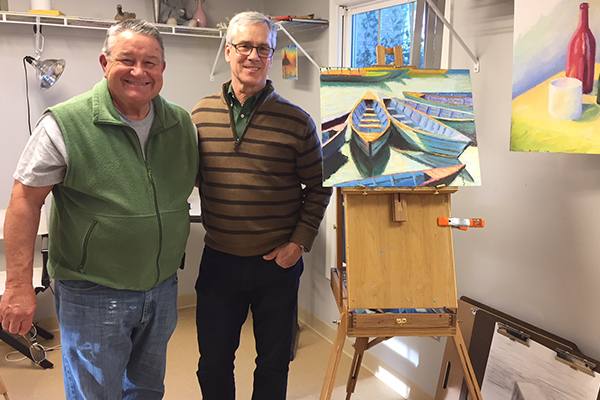
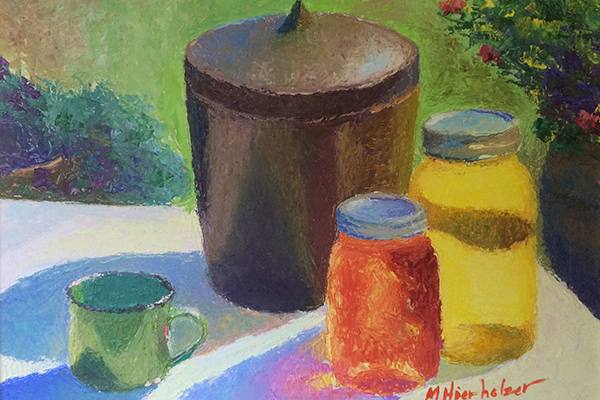
Consider learning more about impressionist oil painting, and the Henry Hensche method with a palette knife and an open mind and eagerness to find beautiful color and create amazing light filled paintings!
Contact Mark Hierholzer at: mark@artforthejourney.org
